In 2019, selling a $3 million house has become surprisingly common in New Zealand. In the first half of this year, 174 houses sold for that price, 150 of them in Auckland according to REINZ. And that’s been higher in previous years.
In the mid- to late-1980s when the stock market bedlam happened and prices went nuts, Bayleys agent David Rainbow sold a Frank Lloyd Wright-style cliff-top house in Wairangi Street, Herne Bay for $5m to car dealer Colin Giltrap in May 1988. It was just before Auckland property prices had felt the full impact of the 1987 crash.
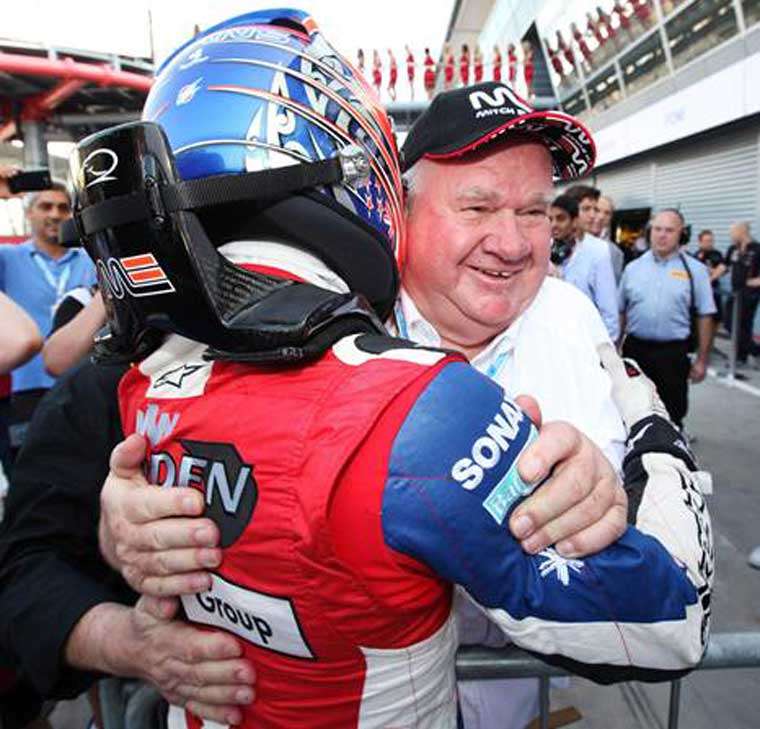
Richlister Colin Giltrap paid a record $5m in May 1988 for the cliff-top house in Wairangi St, Herne Bay. Photo / file
Start your property search
The 780 sq m property known as Monterey was lavished with masterful detail when it was built in 1985. Architect Pete Bossley designed light fittings, door handles, the stonework and sculptural timber framing screen in the entry way. Schist stone was used on the entry, fireplaces and walls surrounding the long narrow house. The built-in furniture was customised for the property, which also included an infinity pool, conservatory with pool, a billiard room, gym with spa and sauna, intercom system and a staff apartment above the four-car garage.
In 2003, when the property market was still recovering from the 2000 crash, the Giltraps sold for $7.2m.
It was then bought for $10.75m in 2013 by National party donors and former shareholders of Kim Dotcom’s Mega, Hong Kong-based Zhao Wu Shen and Susan Chou, who quit it in 2015 along with the rest of their $26m portfolio of property around Auckland.
But it is the storied Waimanu estate on Argyle Street, around the corner, that sums up the resurgence of Herne Bay and explains why it was the first suburb to hit the million dollar median price club.
It starts back in mid-1989 when Rainbow was called in to sell Waimanu for the developer Graeme Soljan. Soljan had built the 860 sq m house in 1987, briefing architect Pete Bossley to copy the pavilion style of the Hawaii’s Halekulani Hotel. Not surprisingly, Soljan, a member of the winery family, had an interest in horticulture, Rainbow remembers. He wanted to surround the house with tropical gardens for the exotic plants and pools as he loved. The vast 4229 sq m estate is bordered by the country’s most expensive streets.
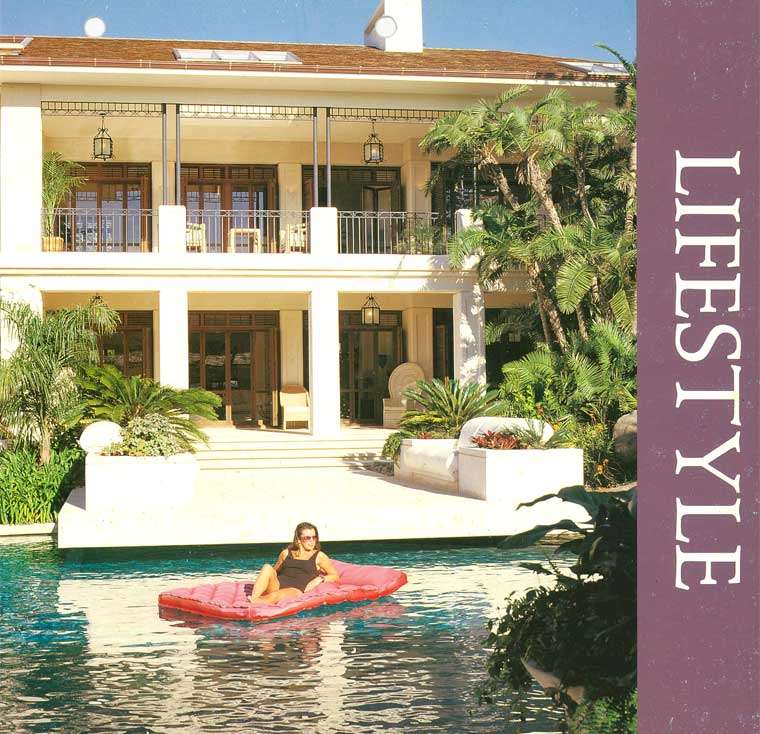
The 1988 marketing brochure for Waimanu features 80s-style model in the famed tropical garden. Photo / supplied
The sales brochure at the time boasts of “8 ft wall with a sophisticated infra-red security system”, a 28 inch television linked to an international satellite dish and over 80 speakers dotted around the house and garden. And, daringly, it included the agent's mobile phone number, one of the first Rainbow reckons.
“The old 'brick', I think it was an Audivox. I was one of the first to get one, it clicked into my car in the boot - very ' yuppie ' but necessary.”
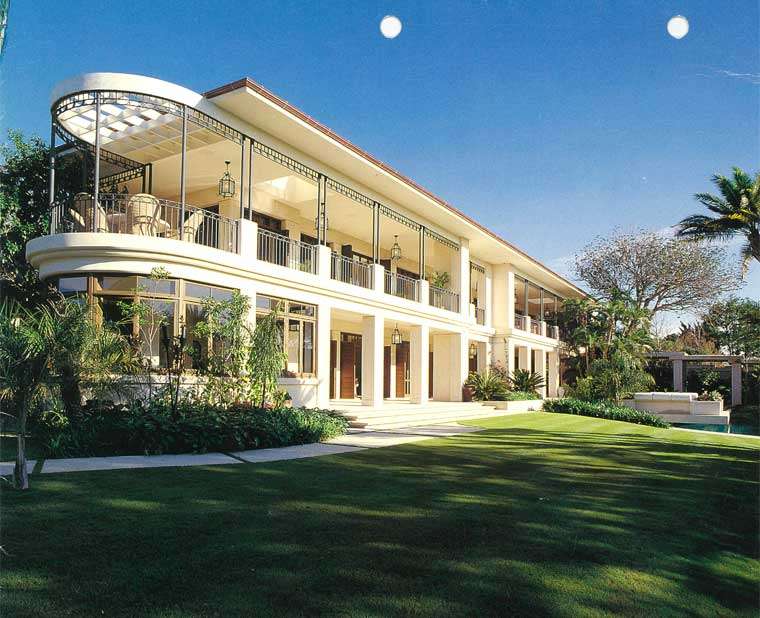
Waimanu's first owner, Graeme Soljan, created tropical gardens in the style of the Halekulani Hotel on Hawaii’s Waikiki. Photo / supplied
That house sale was a sign of the late-eighties money-go-round.
“We actually sold it three times, the first at auction in June 1989. We sold twice to the same person who paid the $300,000 deposit then failed to settle. In the end the bank made it a mortgagee sale and we sold for $3.4m to David Murray, here from Scotland to run Bond & Bond.”
Scottish millionaire Murray, was owner of Rangers Football Club in Glasgow, from 1988 until he sold it in 2011. He used to rent the house to Rod Stewart and Rachel Hunter when they visited New Zealand with their children.
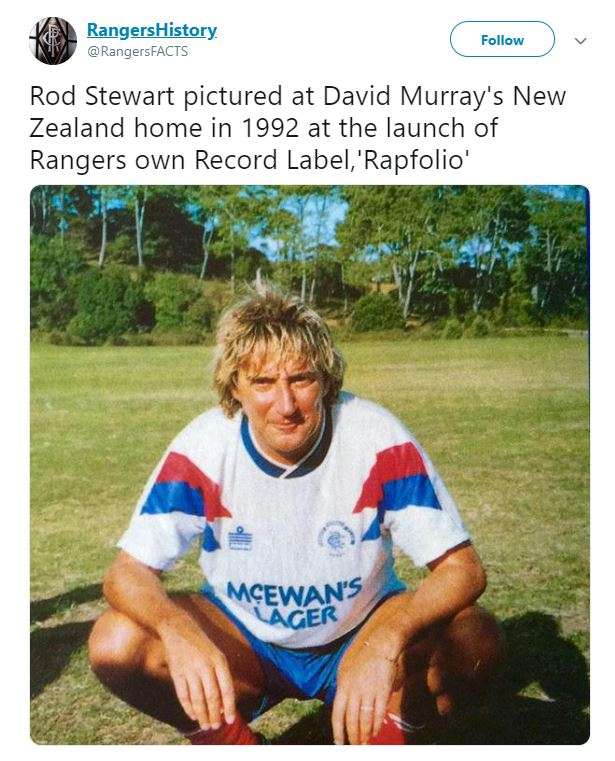
Rod Stewart sat Waimanu in 1992. He stayed there with his then-wife Rachel Hunter when it was owned by soccer club owner David Murray. Photo / Instagram
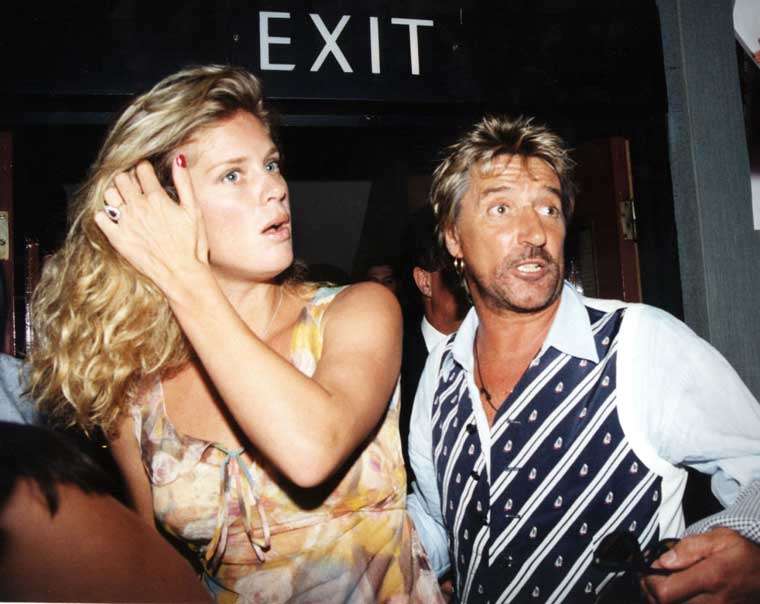
Stewart with Hunter in the 1990s. Photo / Getty Images
Today Waimanu is valued at $23m.
While sales in the suburb have picked up since the 80s, it’s still one of the city’s most tightly-held suburbs.
“Herne Bay is quite tight. Waterfront always leads the market up, and it leads the market down,” says Rainbow. “I suppose it will be the first average $3m suburb.”
Murray sold Waimanu to the Sultan of Brunei for $6.8 million in 1995. The Sultan (or more precisely, one of his people) was buying up property ahead of the Commonwealth heads of government meeting in Auckland that year, including a number of houses in the surrounding streets. But despite a seriously glitzy makeover of that and another heritage villa in nearby Wairangi St, the Sultan and his entourage only ever stayed in hotels on the rare times they were in the city.
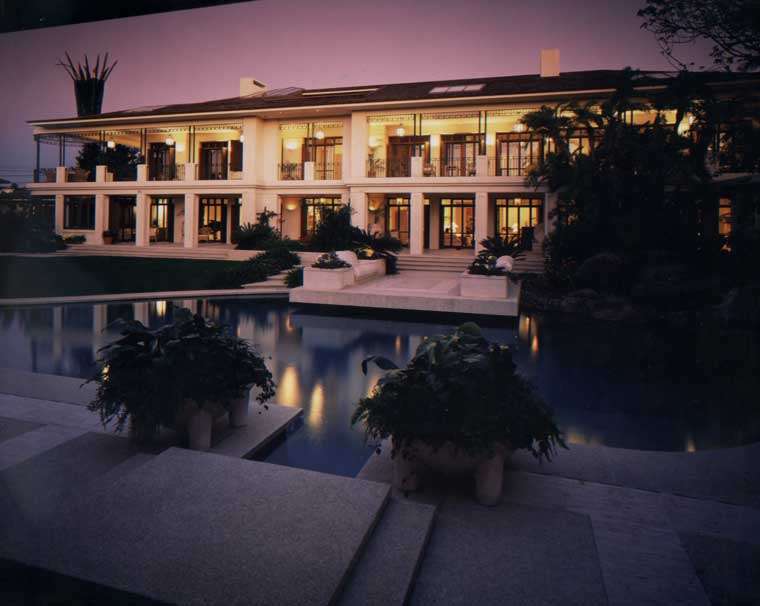
Waimanu was renovated for the Sultan of Brunei in 1995, then sold to current owner, businessman Gary Lane in 2005 who completely modernised and transformed the property. Photo / file
Ten years later, businessman Gary Lane, paid $35 million for the Sultan’s portfolio of properties to get his hands on Waimanu. The Waimanu portion of the deal reportedly was just over $11m, $2m below its council valuation at the time. Lane gradually sold off the other properties.
Lane, who sold food brands Healtheries and Hansells for $140 m in 2006, extensively renovated the house, with stylish input from award-winning architects Mitchell Stout, builders and landscapers. Out went gilt and satin, gold-edged paintings and heavy drapes, in came a whole rebuild of the pool and tropical gardens and an upmarket kitchen and garden room. The house has a banquet room, music and entertaining area, sunken pool with bridge, a separate commercial-sized gymnasium with squash courts and, reportedly, a bunker installed by the Sultan.
The famed pools and gardens hit the news in 2012 when thieves stole more than 100 pricey tropical fish from the ponds, despite heavy security. Lane still owns the house, but spends much of his time in London.
“People moved to Herne Bay from the Shore, Milford or Takapuna, when the bridge became congested, because it’s close to the city while Remuera was close to the schools. But now they’re moving back east as trekking across town to schools gets harder, but I wouldn’t call it a stampede.”
“Auckland people say we’re expensive, but it’s a fantastic spot to live in,” says Rainbow, pointing to the price comparisons in Sydney’s Rose Bay, a similar tony waterfront suburb. There new apartments are being marketed for AU$12m, $40,000 per square metre.
“We’ve had some spectacular properties and some spectacular sales.”











































































